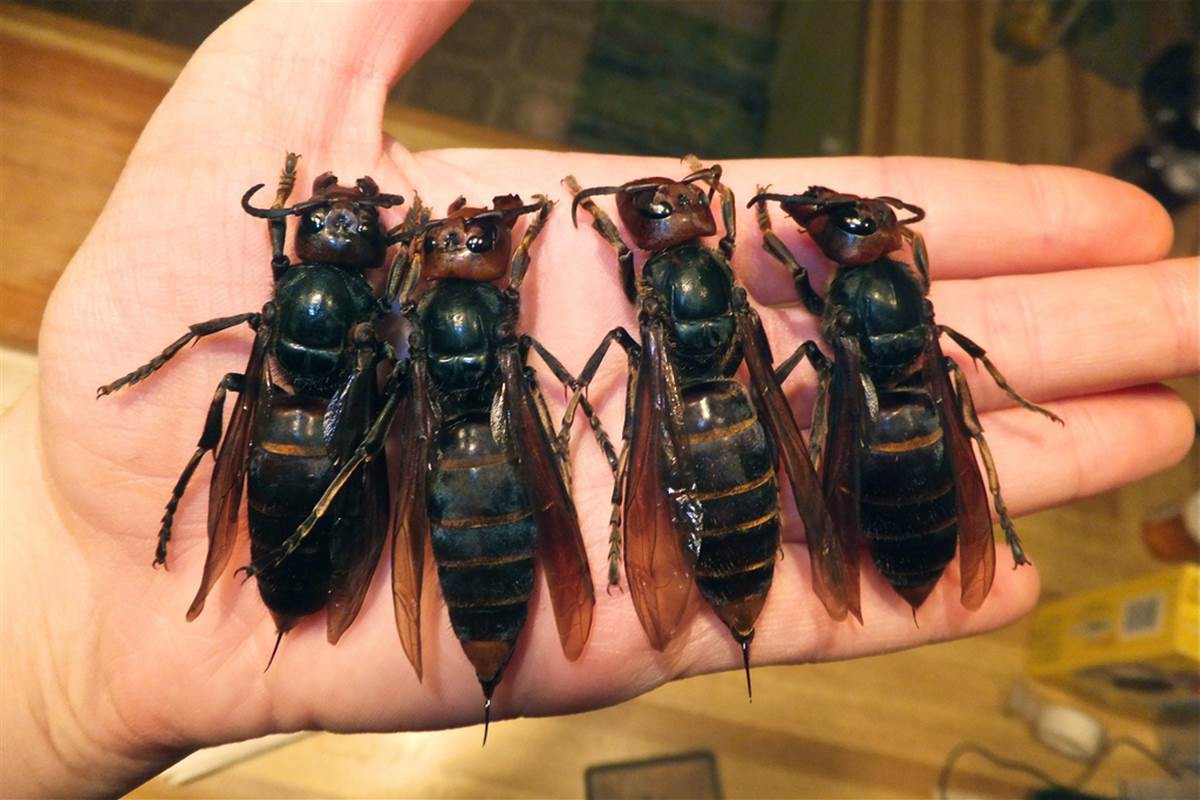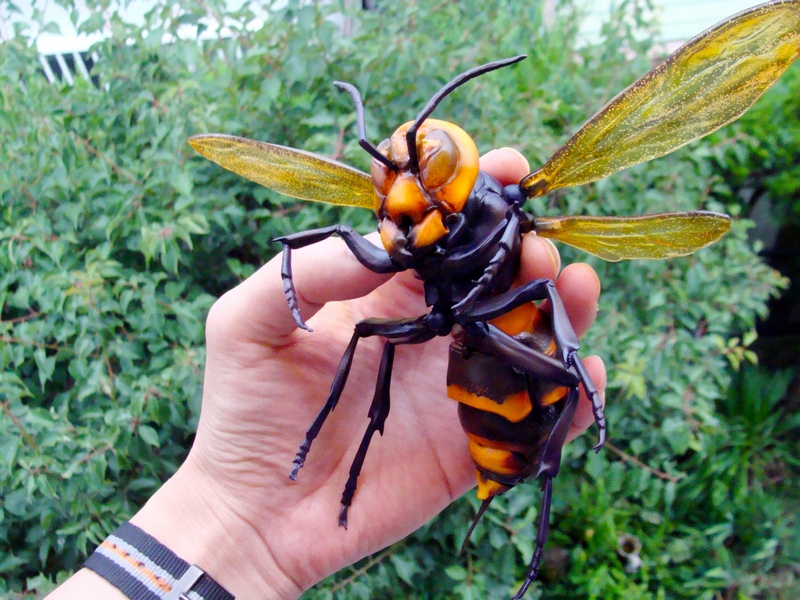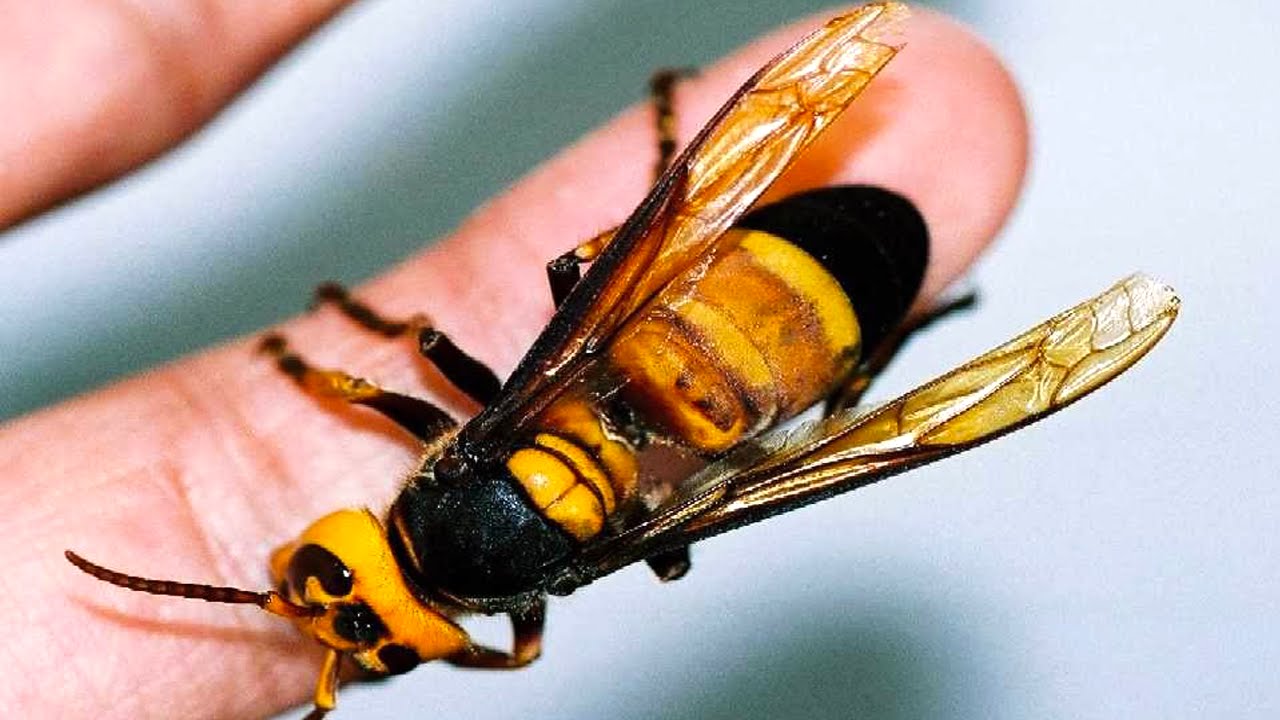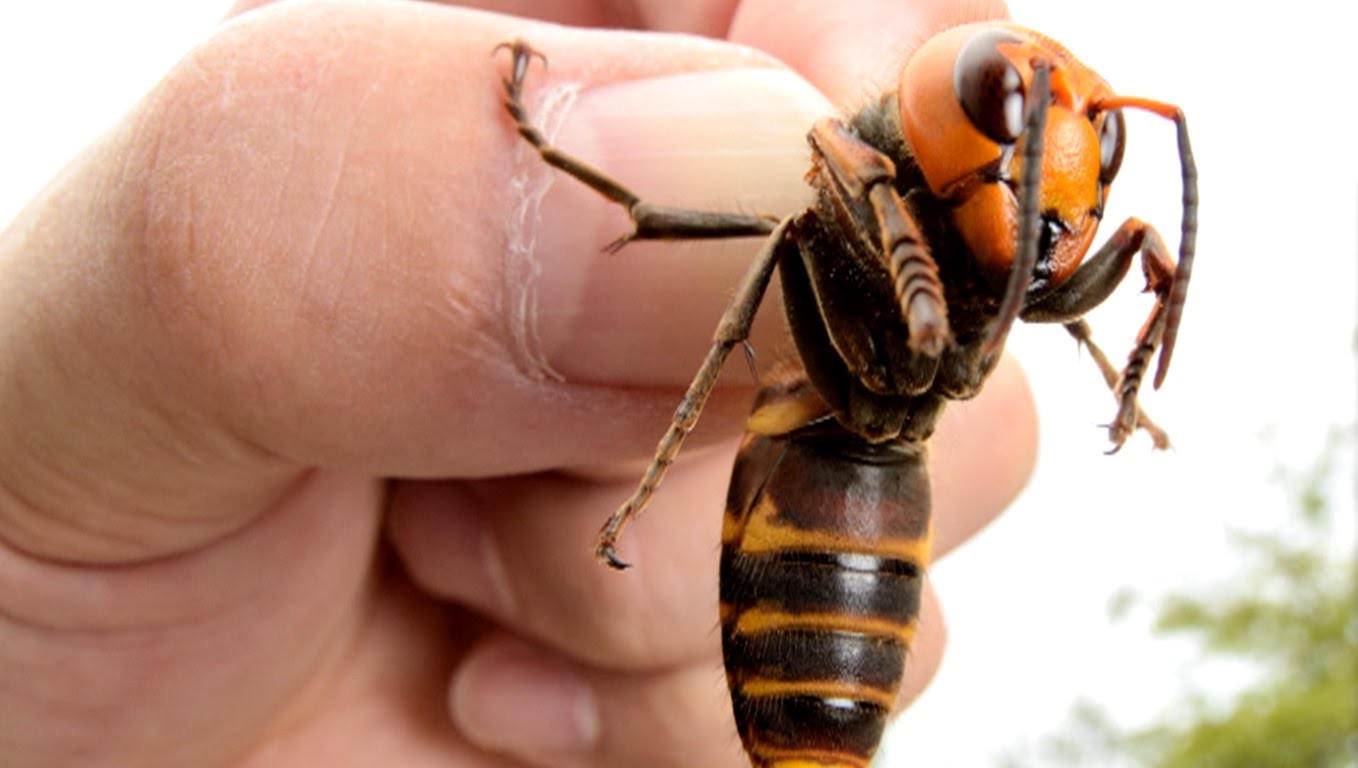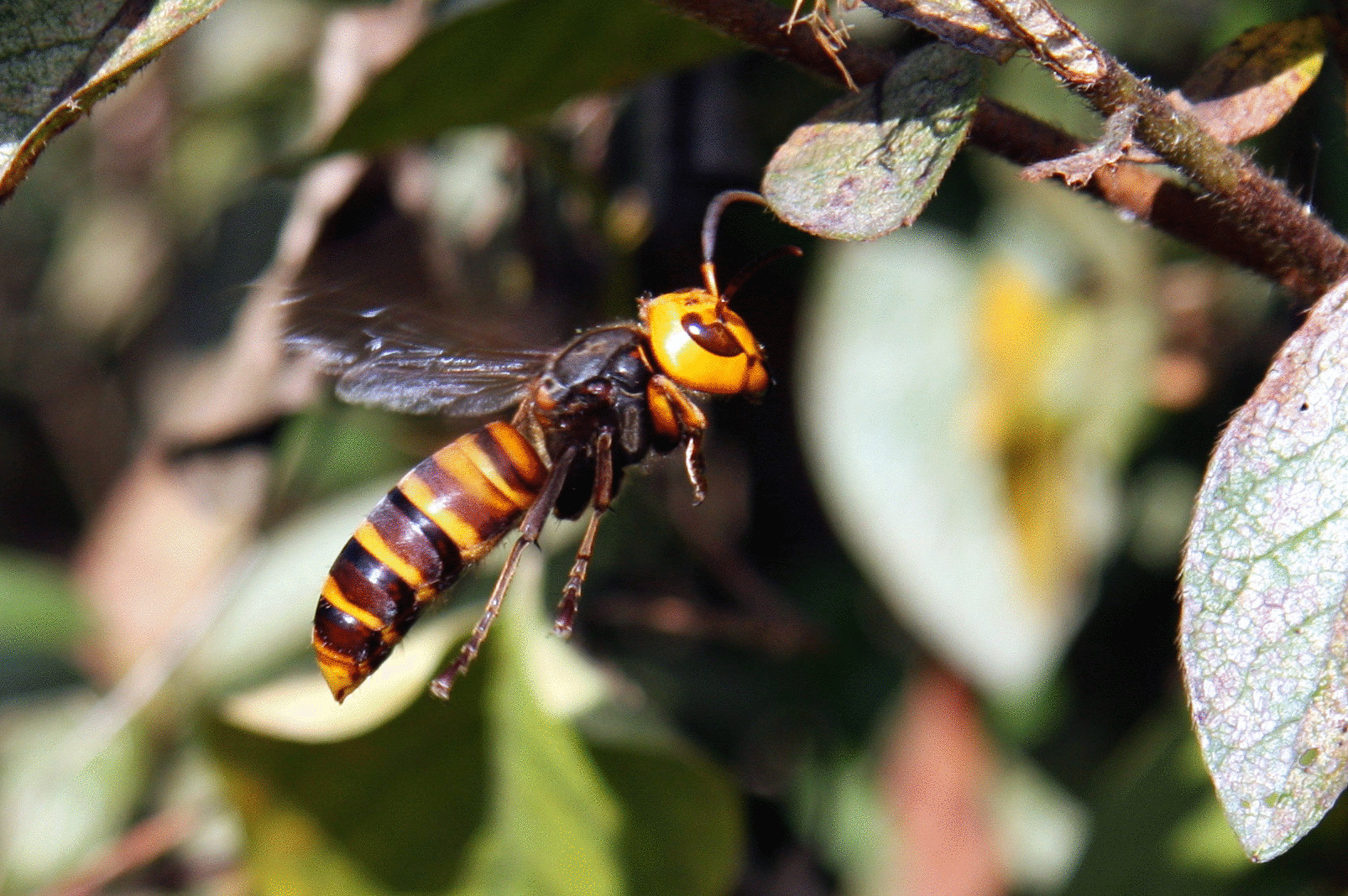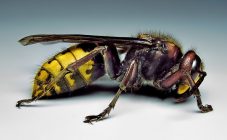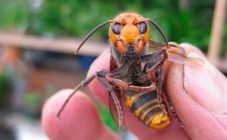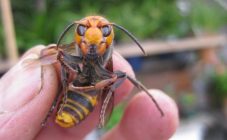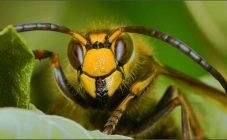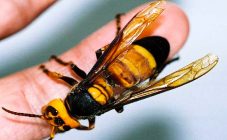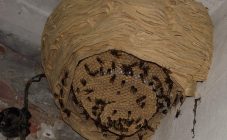Content:
There are a huge number of different types of insects in the world - bees, hornets, wasps and others. Some of them are not dangerous to humans, some, on the contrary, can fatally injure, especially if a person is allergic to insect venom. Most insect species are small in size, but there are very large subspecies such as the giant Asian hornet.
The largest hornet in the world: description
The largest hornet in the world at the moment is the Asian, the official name is the Vespa Mandarinia hornet. This is an insect, the attack of which can be fatal for a person allergic to poison or have serious consequences. They can live in regions of China, Japan, India and Nepal. They are also found in Russia, the main habitat here is the regions bordering China - Vladivostok and its environs. On the Chinese island of Taiwan, this insect is called the "tiger bee", and in various Japanese regions - as the royal hornet.
The size of the huge hornet is impressive for tourists visiting the regions where these giants live. Asia is rich in various insects, but these are by far the largest. The dimensions can be really impressive:
- the length usually does not exceed 1 cm, but some individuals grow up to 5 cm in length;
- the wingspan is on average about 3 cm, and in especially large specimens - up to 7 cm or more;
- the length of the sting is on average 6 mm, which makes it easy to pierce the skin of a person or animal.
After stinging, the sting remains with them and can be reused. In this, the giant hornet is very similar to an ordinary wasp. They live in nests, which they themselves create from chewed particles of paper, tree bark and other materials. The house is ruled by a female, who is often its founder. At the beginning of the season, she lays eggs, from which offspring then appear that live in this nest.
For a healthy person who does not suffer from allergies, these species are practically not dangerous, but when attacked in a group, they can be fatal. In the regions of habitation, there are very frequent cases of attacks on villagers. After stinging, a large swelling forms, the place instantly turns red and a terrible pain appears. The Japanese scientist M. Ono at one time described the attack of the Asian hornet very meaningfully, saying that he felt as if a nail, red-hot to the limit, had been hammered into the place of defeat. There are cases that people who did not have an allergy to insects died from stinging, since their poison has a very complex chemical composition. It is noteworthy that this species extremely rarely uses its sting, most often, thanks to the developed jaws, they simply pull out a piece of skin.
The life cycle of these remarkable hornets usually consists of the following stages:
- at the moment when the nest reaches a large size, the uterus begins to actively lay eggs, from which offspring appear - the so-called working hands of the nest;
- after some time, the offspring begins to multiply among themselves, after which the males die;
- at the beginning of heavy rains in Asia, the nest falls into decay and completely dies out.
In general, the life span is about one year.Often this species does not have time to live to a natural death; they die from various viruses and tick attacks.
Many people are terrified of large hornets, especially Asian ones. However, in fact, this species is not aggressive and practically does not attack first. A huge number of cases of attacks most often occurred through the fault of the person himself, who was near the nest, or by individual individuals. Basically, hornets attack, perceiving the presence of outsiders as a threat, and acts to protect.
However, they have been scientifically proven to be of great benefit as they kill harmful insects and mosquitoes. Some medications add their poison, as it is believed to boost immunity.
What are the giant killer hornets?
Giant killer hornets are members of the common genus Vespa. The largest hornet in the world is the Asian one, as well as its tiger counterpart. Some of these species grow to enormous sizes, so they are often compared to sparrows or small animals. The genus Vespa is translated from Latin as "wasp", which is useful for forests, orchards and vegetable gardens, as it feeds on harmful insects and mosquitoes. Their benefits have been scientifically proven for a long time, in some countries they are under environmental protection.
Unlike ordinary wasps, giant hornets hurt more: the site of the lesion hurts terribly and edema forms. They also differ in that at the moment of a threat to a nest or a group, insects mobilize and attack at once with a whole swarm. Deaths are known when people were bitten by several individuals at the same time. At the time of the threat to the nest, they can release a special chemical that serves as a danger signal to the inhabitants.
Tiger hornet: what it is and how it looks
This subspecies is found in Japan and Taiwan and is also part of the genus Vespa. It practically does not differ from its counterparts who live in other parts of Asia, except that sometimes they have a striped coloring closer to the sting. Due to this, they are very similar to wasps.
The biggest bumblebee in the world
Bumblebees belong to the genus of bees and are one of the closest species to ordinary honey bees. The largest are the Asiatic, which are often called killer bumblebees or tiger due to their tiger-like coloring.
These insects are usually quite large in size:
- the body is about 30 mm long in females and 26 mm in males;
- the width is about 15 mm;
- the wingspan can reach 50 mm in the largest individuals.
The giant bumblebee, or bumblebee tiger, is the name most commonly found in Japan or China. Despite the development of medicine and the creation of new drugs, a relatively large number of people still die from attacks of representatives of this species, the number of which goes to hundreds throughout the world. The bumblebee is a more aggressive insect, and there are cases when it attacked first. He has well-developed jaws, so he can not only sting, but also bite painfully. Bites, by the way, hurt the most. However, for the inhabitants of Russia and other CIS countries there is no reason for fear, since this class does not occur here. You should beware only when planning a trip to Asian countries.
This class of insects feeds on the sap of trees and plants, as well as the nectar of flowers. The sting after the attack remains with the bumblebee, in this regard, he has the ability to reuse it. During the attack, he injects a small amount of poison. Cases of getting it into a vein or vessel can be especially dangerous. Then the poison acts on the body faster. This is manifested by more severe pain and swelling. An affected person with allergies needs urgent medical attention.
Giant bumblebees and hornets are huge insects for their species. They are poisonous and can cause severe harm. Despite this, they rarely attack on their own, most often in order to protect their habitat. This should be taken into account when planning a trip to Asian countries. In Russia they are rare, but it doesn't matter who is forewarned is protected!
